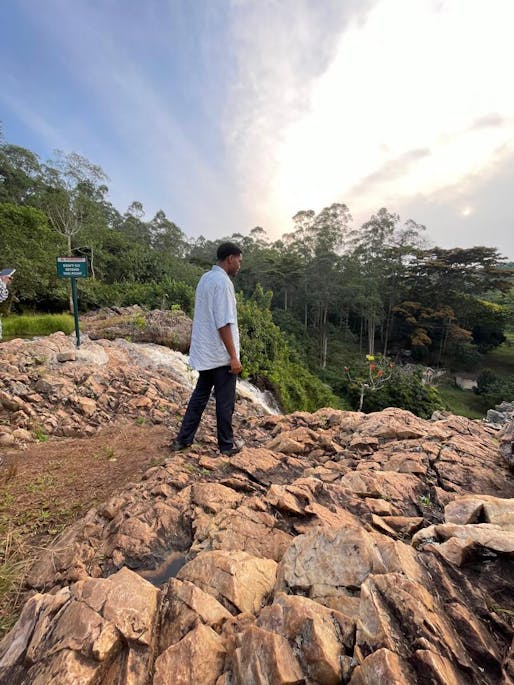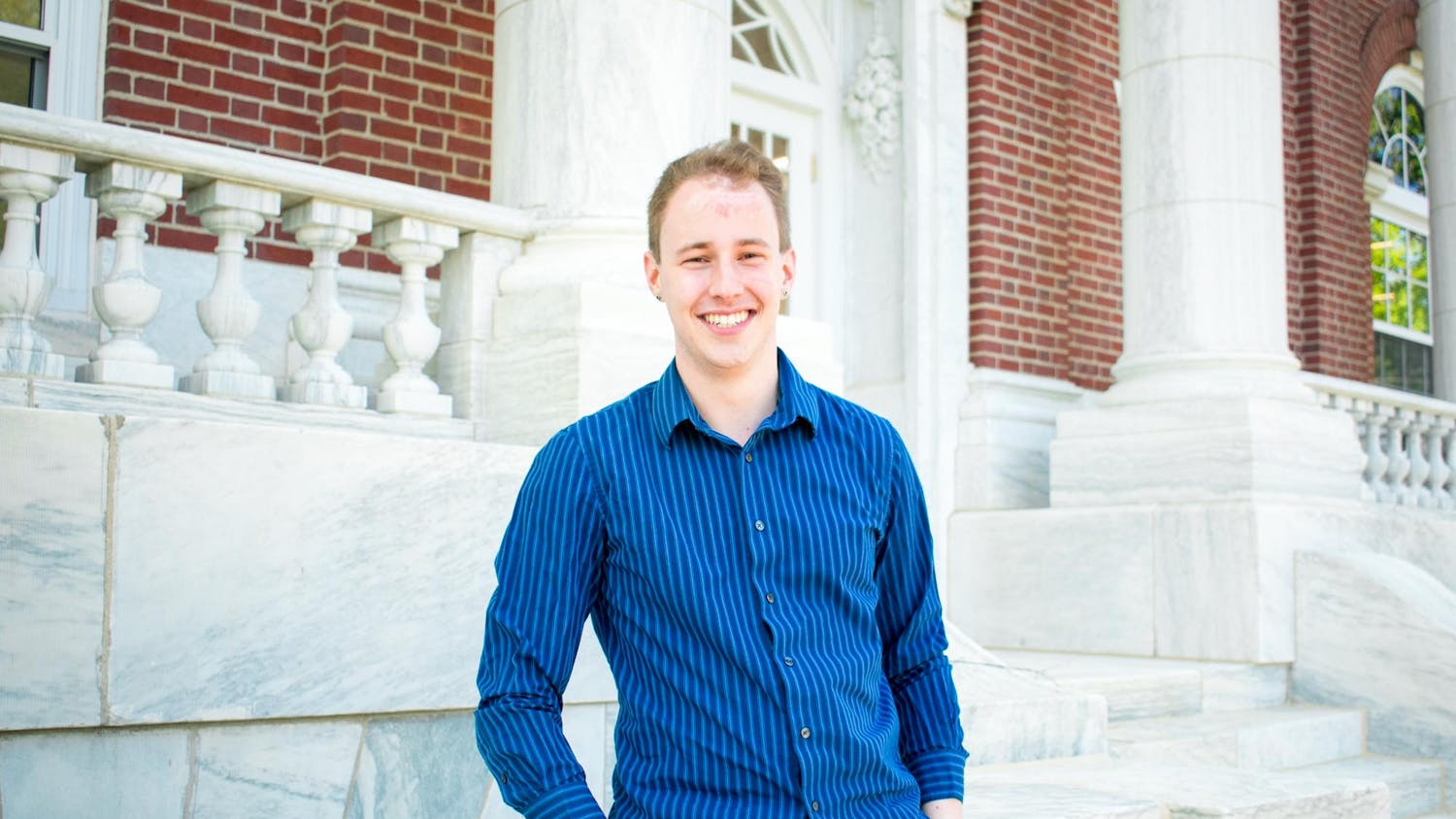Certain students in the Class of 2025 will be the first, and only, people to graduate from Tufts with their specific major. What do they all have in common? Well, on an official level, they’ll each receive a bachelor’s degree in interdisciplinary studies, even though this one degree spans across and beyond the academic concentrations Tufts offers.
This program lets students design their own major that bridges at least three fields of study, culminating in a senior thesis or project. Currently, there are 20 undergraduate students enrolled in the interdisciplinary major, including Isaac Gewirth, Kyle Hammond and Viviana Stulack, who are all graduating seniors.
Stulack came to Tufts thinking she would major in cognitive and brain sciences. After taking “Children & Mass Media” with Julie Dobrow, who is the program director of the Center for Interdisciplinary Studies, Stulack found a gap in the academic conversation that she was passionate about filling.
“When it came to different films we were watching or TV shows that we were referencing in our papers, there wasn’t really a space to be discussing how people of different economic classes were being represented and not being represented at all,” Stulack said.
Dobrow encouraged her to propose an interdisciplinary major addressing these issues. Stulack chose to title it “Equity and Inclusion in Children’s Media,” combining film and media studies, sociology and civic studies.
Unlike other majors, the interdisciplinary major requires an application and interview process during undergraduates’ sophomore spring. Students must demonstrate that their interest truly falls outside of the traditional major and minor structure.
“[The major is] more than just taking three courses here and four courses here,” Dobrow said. “There’s some sort of unifying theme that brings all of these different disciplines together.”
Hammond identified the through line in all his courses as “how systems affect people and how people affect the systems.” He titled his major “Human, Business, and Social Development,” which encompasses economics, sociology, entrepreneurship and urban and environmental policy and planning. The latter two are not offered as standalone majors at Tufts, but Hammond was able to center them in his exploration of how communities build economies.
Occasionally, students will use the major to study within an established interdisciplinary field. That’s what Gewirth did, although at first they didn’t know their area of interest already had a name: material culture studies.
“Rather than studying fine art, it’s studying normal objects of our everyday life,” Gewirth said. Their major lies at the intersection of art history, anthropology and sociology.
As a woodworker and combined-degree student in the School of the Museum of Fine Arts, Gewirth felt this major “dovetailed well” with their artistic practice.
“I like to contextualize what I’m making physically with a theoretical approach,” Gewirth said. “As I began making furniture, I was really struck by how my identity … became invested in those objects.”
These interdisciplinary students forged unique paths through Tufts’ various departments — and even further afield into international collaborations.
As a Laidlaw Scholar, Hammond had the opportunity to conduct research in Kampala, Uganda, with Tufts professor Justin Hollander and the Urban Action Lab at Makerere University. Hammond’s field studies evolved into his senior thesis about the social and environmental impacts of human settlement in wetland areas, and how communities respond to the interlinked challenges of urbanization and climate change. Hammond pointed to relationship-building and informal interviews as core to his research methods.

Kyle Hammond is pictured in Uganda.
“Once people realize, ‘This guy’s not here to take advantage of us,’ [they realize I] really want to understand what’s going on in person,” Hammond said.
Inspired by this work, Hammond plans to return to Tufts next year to complete his master’s degree in urban and environmental policy and planning. Beside academia, he’s also exercising the business component of his major through his faith-based clothing brand, Don’t Sell Your Spirit For Society.
“Being involved in different faith communities on campus and taking entrepreneurship classes, I gained the ability to [market] my own products,” Hammond said.
All three of these students notably expressed an entrepreneurial or creative drive which exemplified the self-directed nature of students in the interdisciplinary program.
“They’re people who really want to take command of their own education,” Dobrow said. “It’s just a joy to work with them.”
For their interdisciplinary thesis, Gewirth talked to producers, consumers and curators of wooden objects all over New England, from Somerville’s Union Square to Vermont. Curators, such as small business owners, are the intermediaries that link the woodworkers to the final user. Gewirth analyzed common values and themes that people associated with wood over its life cycle, such as ethical consumption.
Gewirth completed not one, but two theses for their combined degree. For SMFA’s senior thesis show, they also exhibited a wooden shelf that carried over themes of their written thesis to a physical format.

A maple bookshelf made by Isaac Gewirth in 2022 is pictured.
After graduation, along with teaching woodcraft at the Eliot School of Fine & Applied Arts, Gewirth will continue working with the designer Mitch Ryerson to make furniture and other projects, including wooden playgrounds that can be spotted at public parks in the Boston area. Gewirth will also have studio space to work on independent projects.
“My favorite thing I’ve made is always the next thing,” Gewirth said.
Stulack also incorporated a creative element into her thesis work. Stulack has a second major in child study and human development, getting the best of both worlds of a structured major and self-designed program. For her interdisciplinary thesis, Stulack wrote a traditional scholarly paper analyzing representations of poverty in children’s media, as well as a pilot episode for a children’s TV show that gave voice to the same topics in a child-friendly format.
“It’s about a Honduran-American family of young women, a single mother and three daughters, which is modeled after my own experience,” Stulack said.
Stulack said she hopes to work on Sesame Street or “the next big thing” in children’s media and develop her thesis into a full-fledged show.
“It’s important that [the] people that are telling these kinds of stories have some form of lived experience,” she said. “I don’t believe I’m an authority to every single person that deals with economic struggle, but I do feel like I can speak about my own experience in a way that holds empathy for all parties involved.”
The possibilities are nearly endless in the interdisciplinary major — it just takes a vision and a plan. Hammond recalled mentoring sophomores who were considering an interdisciplinary major.
“The biggest thing that deterred them … was not believing in themselves enough, and that’s what sort of stopped me at first too,” he said. “You have to set your own path. … The more you can start to think about: What do I want my education to lead to? That really helps.”






